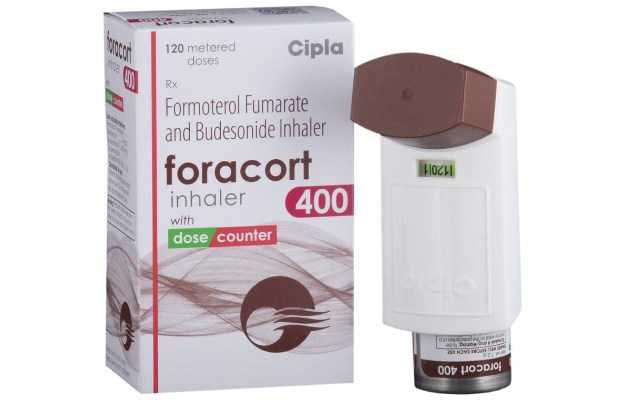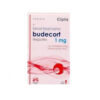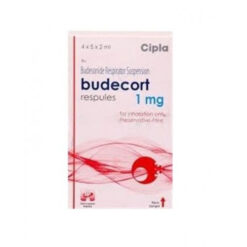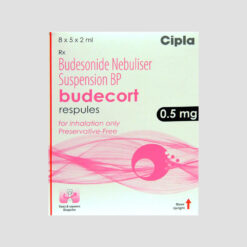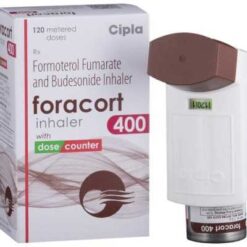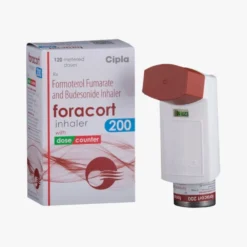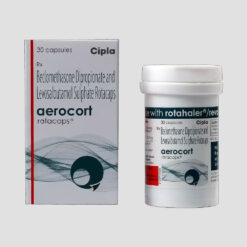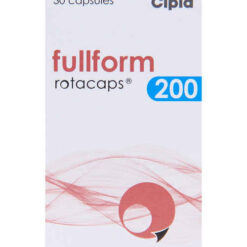Foracort Budesonide- Formoterol Inhaler
$62.00 – $180.00
Brand name – Foracort Inhaler
Generic name – Budesonide 400mcg + Formoterol 6mcg
Manufacturer – Cipla LTD
Packaging – 1 unit per box
Delivery Time – 6 To 15 Days.
FORACORT Inhaler contain both budesonide and formoterol; therefore, the mechanisms of action described below for the individual components apply to FORACORT Inhaler. These drugs represent two classes of medications (a synthetic corticosteroid and a long-acting, selective beta2-adrenoceptor agonist) that have different effects on the clinical, physiological, and inflammatory indices of Chronic Obstructive Pulmonary Disease (COPD) and asthma.
Budesonide
Budesonide is an anti-inflammatory corticosteroid that exhibits potent glucocorticoid activity and weak mineralocorticoid activity. In standard in vitro and animal models, budesonide has approximately a 200-fold higher affinity for the glucocorticoid receptor and a 1000-fold higher topical anti-inflammatory potency than cortisol.
In glucocorticoid receptor affinity studies, the 22R form of budesonide was two times as active as the 22S epimer. In vitro studies indicated that the two forms of budesonide do not interconvert.
Inflammation is an important component in the pathogenesis of COPD and asthma. Corticosteroids have a wide range of inhibitory activities against multiple cell types (e.g., mast cells, eosinophils, neutrophils, macrophages, and lymphocytes) and mediators (e.g., histamine, eicosanoids, leukotrienes, and cytokines) involved in allergic and non-allergic-mediated inflammation. These anti-inflammatory actions of corticosteroids may contribute to their efficacy in COPD and asthma.
Studies in asthmatic patients have shown a favorable ratio between topical anti-inflammatory activity and systemic corticosteroid effects over a wide range of doses of budesonide. This is explained by a combination of a relatively high local anti-inflammatory effect, extensive first pass hepatic degradation of orally absorbed drug (85-95%), and the low potency of formed metabolites.
Formoterol
Formoterol fumarate dihydrate is a long-acting, selective beta2-adrenergic agonist with a rapid onset of action. Inhaled formoterol fumarate dihydrate acts locally in the lungs as a bronchodilator. In vitro studies have shown that formoterol has over 200-fold greater agonist activity at beta2-receptors than at beta1-receptors. The in vitro binding selectivity to beta2-adrenoceptors over beta1-adrenoceptors is higher for formoterol than for salbutamol (5 times), whereas salmeterol has a higher (3 times) beta2-selectivity ratio than formoterol.
Although beta2-receptors are the predominant adrenergic receptors in bronchial smooth muscle and beta1-receptors are the predominant receptors in the heart, there are also beta2-receptors in the human heart, which comprise 10–50% of the total beta-adrenergic receptors. The precise function of these receptors has not been established, but they raise the possibility that even highly selective beta2-agonists may have cardiac effects.
The pharmacological effects of beta2-adrenoceptor agonist drugs, including formoterol, are, at least in part, attributable to the stimulation of intracellular adenyl cyclase, the enzyme that catalyses the conversion of adenosine triphosphate (ATP) to cyclic-3′, 5′-adenosine monophosphate (cyclic AMP). Increased cyclic AMP levels cause relaxation of bronchial smooth muscle and inhibit the release of mediators of immediate hypersensitivity from the cells, especially from mast cells.
| Packaging Size | 3 Units, 6 Units, 9 Units |
|---|
Related products
Asthma

